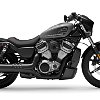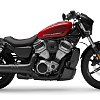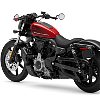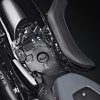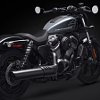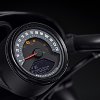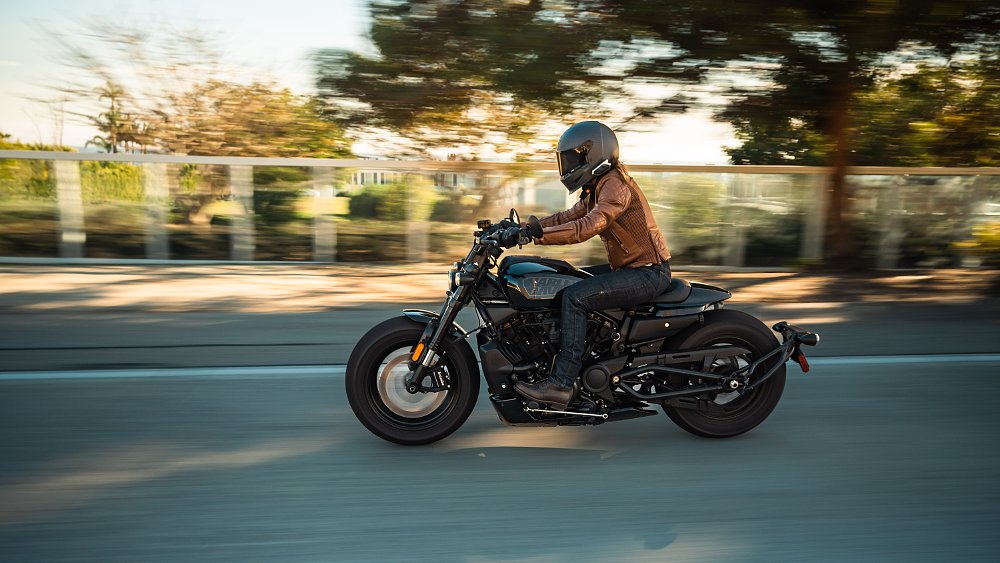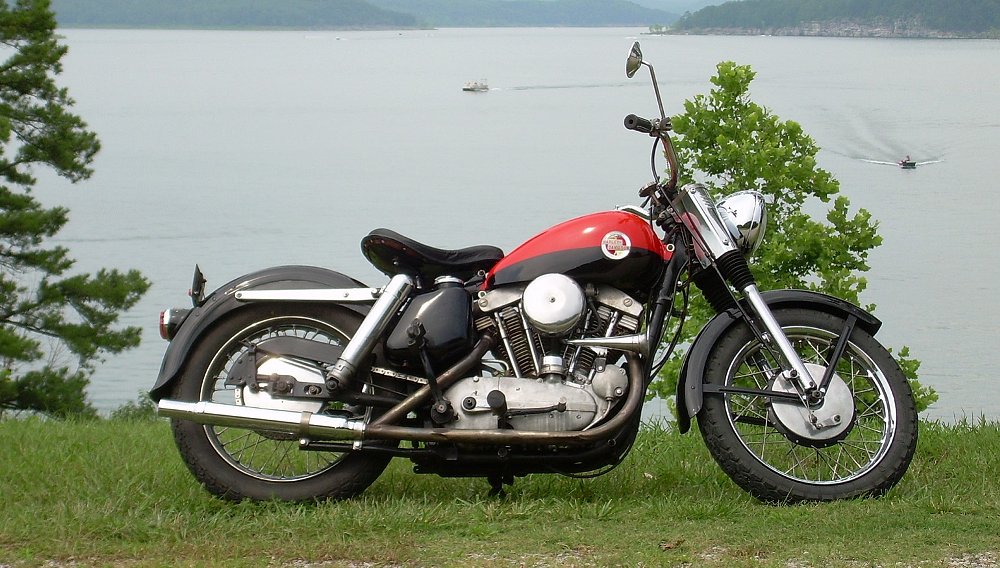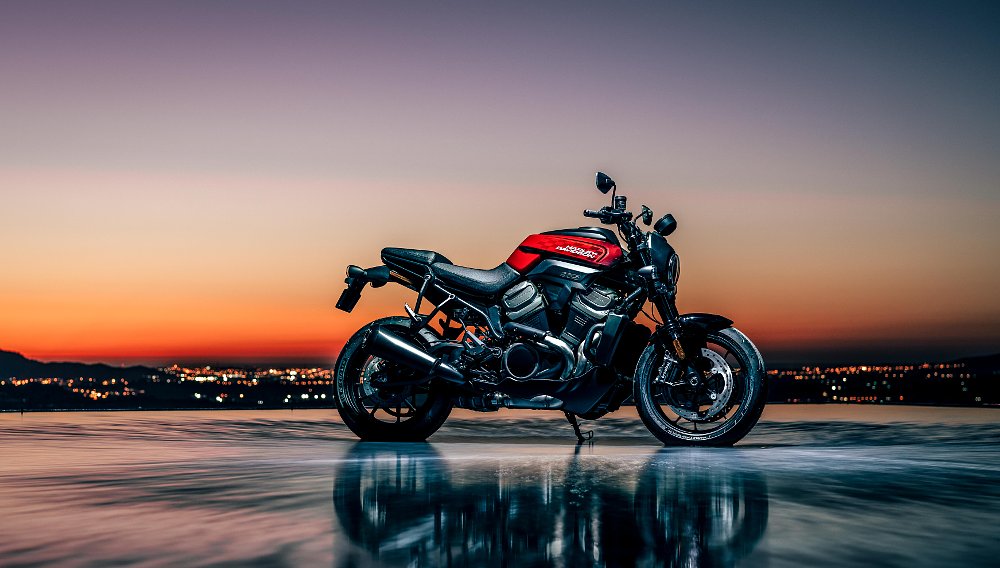Harley-Davidson unveiled the Nightster 975 today, the second entry in the new Sportster line powered by the liquid-cooled Revolution Max engine, as the long-lived Evolution-engine Sportsters fade into the sunset. While the Nightster looks a little more like the Sportsters we've known for the past 30-plus years than the Sportster S, the only thing the Nightster has in common with the 1991 Sportster I used to ride is the size of the wheels. The new era in Sportsters is here.
The Nightster uses the 975 cc version of the Revolution Max engine that originally appeared in the Bronx concept bike, but this is not the Bronx. Harley-Davidson began the reinvention of the Sportster line with the highly styled Sportster S power cruiser. Now we get the Nightster, which provides a slightly lower cost of entry into the Sportster line. Starting at $13,499, the Nightster comes in $2,000 less than the Sportster S, but it's still more expensive than the Iron 883, the Evo-powered Sportster that's been hanging on as the low-price entry in the U.S. lineup for Harley-Davidson at $11,249. I think we can safely say the days of a new Sportster with a four-digit price are behind us forever.

It's unquestionable, however, that the new Nightster is a lot more motorcycle than the old Iron 883 or any other Evo Sportster. It's also unquestionable that some traditionalists are going to scowl at the new bike. Love it or hate it, however, the transition was inevitable. The Evo Sportsters aren't even sold in many parts of the world any more due to their inability to meet emissions standards.

How is the Nightster more motorcycle than the old Sportsters? Start with the power from the Revolution Max 975T engine. Harley-Davidson claims 95 horsepower at 7,500 rpm. It took some real work to extract that kind of power from an old 1,200 cc Sportster and never mind an 883. The new engine brings modern engineering such as liquid cooling and variable valve timing to the task, but thankfully it still retains hydraulically operated valves to reduce maintenance.

As the engineers and designers explain in the Harley-Davidson video below, packaging that engine into something that looked familiar to Sportster lovers led to one of the decisions that I expect some traditionalists to sniff at. That may look like a traditional peanut Sportster fuel tank, but it's really a cover over an airbox. The fuel tank is plastic and it's located under the seat. That allows not only a larger volume airbox, but also creates a straight shot into the cylinders.
Old Sportsters never dreamed of modern electronic rider aids, either. Like the Sportster S, the Nightster comes with three ride modes, Road, Sport, and Rain, which adjust throttle response, power levels at different points in the rev range, the level of intervention from ABS and traction control, and engine braking. Traction control can also be deactivated by the rider while the motorcycle is running but not moving. The other safety aid is what Harley-Davidson calls Drag-Torque Slip Control System, which makes engine adjustments to reduce rear-tire slip under engine braking, instead of using a slipper clutch.

With 70 foot-pounds of torque and a weight under 500 pounds, the Nightster will likely combine entertaining performance and a more palatable style for those who thought the Sportster S's styling went too far with its steamroller tires and high exhausts. It will be fun to see how it performs when we get to ride one.

What's next for the Sportster line?
Harley-Davidson had to make a splash when it presented a radically new Sportster, so we got the highly styled Sportster S first. Now we have the Nightster, something a little more affordable and a little more familiar. What's next? I do expect the Sportster line to keep growing, if only with new style variations.

Of course the question some are asking is whether we'll get a Sportster that fulfills the performance promise of the Bronx concept bike. Personally, I'm not even going to go out on a limb and speculate. When I listen to H-D CEO Jochen Zeitz talk about the future, I have a hard time believing it will happen.

But we'll see. By some perspectives, stranger things have already happened with the Nightster. Go back 15 years, before the Great Recession, and tell a crowd of Harley riders that they'd live to see the day when a Sportster had a 60-degree, liquid-cooled, V-twin engine, a plastic gas tank under the seat, and a black shroud to cover not just the radiator but also the battery positioned low and behind the front wheel, and you'd have been laughed out of the joint.
Sportsters ain't what they used to be. Some will applaud this remake of a model that's been around since 1957, and others will lament it. Either way, change was inevitable, because the alternative was extinction.
| 2022 Harley-Davidson Nightster | |
|---|---|
| Price (MSRP) | $13,499 (Vivid Black), $13,899 (other colors) |
| Engine | 975 cc, 60-degree, liquid-cooled, four-valve, V-twin |
|
Transmission, final drive |
Six-speed, belt |
| Claimed horsepower | 95 @ 7,500 rpm |
| Claimed torque | 70 foot-pounds @ 5,000 rpm |
| Frame | Steel trellis |
| Front suspension | Showa Dual Bending Valve 41 mm fork, 4.5 inches of travel |
| Rear suspension | Dual shocks adjustable for preload; 3.0 inches of travel |
| Front brake | Single 320 mm disc, four-piston caliper with ABS |
| Rear brake | Single 260 mm disc, single-piston caliper with ABS |
| Rake, trail | 30.0 degrees, 5.4 inches |
| Wheelbase | 61.3 inches |
| Seat height | 27.8 inches |
| Fuel capacity | 3.1 gallons |
| Tires | Dunlop Harley-Davidson Series, 100/90-19 front, 150/80B16 rear |
| Claimed weight | 481 pounds wet |
| Available | April 2022 |
| Warranty | 24 months |
| More info | harley-davidson.com |





